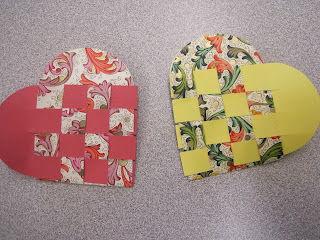The last week before the winter break is reserved for us to enjoy winter/holiday traditions. There are many reasons it is important for children (even when they get older) to create and keep traditions, including:
· Holiday
traditions are touchstones that happen every year no matter what else has
happened. This helps children feel secure and grounded.
· Traditions involve children helping with tasks (decorating cookies, helping
pick out a tree, lighting candles, etc.) and increase their feeling of industry
and usefulness.
· Holiday
traditions are a natural way for children about family values, and provide a
sense of identity and family roles.
· Traditions often revolve around helping others, or being generous with time and
other gifts.
This was a week full of warm
and wonderful holiday memories for our children. Several families came in to
share cultural traditions, stories, and fun activities.
Monday, Samantha’s mom came
in and read a story about Chinese New Year. This is the longest and most
important festivity in the Chinese calendar, and is celebrated in many Asian
countries. We learned that traditions include present giving, cleaning the
house (in order to sweep any bad luck), and decorating with red, which is
considered very lucky. Although Chinese New Year generally falls in January or
February – depending on the moon – the children can count this as a winter
tradition to share. This year the New Year falls on February 10th.
Vivian brought in two crafts
to make – Chinese lanterns to decorate and put together, and a Chinese New Year
sticker activity to learn about our animal birth signs.
Tuesday, Niccolo’s father
came to tell us about La Befana. This is a story that is told every year to
many children in Italy. In Italian folklore, Befana is an old woman who
delivers gift to children on Epiphany Eve (the night of January 5). In the
version Vittorio told, La Befana was once the worst and most evil of all the
witches, but a magical spell made her a very kind and giving old lady. After
she died, she was allowed to come back once a year to leave a treat for every
child.
Vittorio then made Carbone
Dolce for us, which means “Sweet Carbon” and looks very much like a lump of
coal.
Here is the recipe he used:
Rain water
Sand from Ostia (outside
Rome, on the seashore)
Blood of a Nycticorax.
Wednesday, Ella’s mom was here to talk about a
Danish tradition (Ella’s grandmother is from Denmark). First Amy showed us pictures Hans Christian Andersen and told us about
his life and works. We learned that he was not always a writer, but used to be
a weaver's apprentice and a taylor. Ella's mom then read The Emperor's New
Clothes, one of Andersen's most
famous tales. Again, we thought of Andersen's early life as a weaver, as the
scheming weavers in the story wove the "extraordinary fabric".
Lastly, we learned that Hans Christian Andersen was the first to make the
beautiful red and white woven hearts that are often a symbol this time of year.
Red and white are, of course, the colors of the Danish flag. Danes often make
them with their children, and use them to decorate their Christmas trees. We
got to use lots of different colors and patterns of paper, all lovingly precut
by Amy and ready to weave.



No comments:
Post a Comment